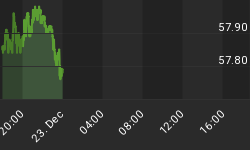The CPI came in exactly in line with the Bloomberg Consensus option today.

It's the details, not the overall number that is worrying. Medical care and rents have been rising rapidly.
The Fed likes to ignore food and energy costs. They have their chance to prove it.
From Bloomberg ...
Pull forward that rate hike is what some of the hawks are thinking after reading today's consumer price report where a benign looking headline, up only 0.1 percent in April, masks rising pressure through many components.
Excluding food and energy, core prices rose 0.3 percent which doesn't seem that much but is outside Econoday's high-end forecast for 0.2 percent. It is also the highest since January 2013. The year-on-year rate for the core is plus 1.8 percent which, after dipping to 1.6 percent earlier in the year, is closing in on the Fed's general inflation target of 2.0 percent.
Readings showing pressure are outside energy including medical costs (up a very steep 0.7 percent in the month) and education costs (up 0.5 percent). Shelter costs, reflecting rising rents, came in at plus 0.3 percent for the 3rd time in 4 months which is the hottest streak for this reading since way back in late 2006 and early 2007. Also standing out are gains in furniture (up 1.3 percent) and used cars (up 0.6 percent).
Oil prices have been on the rise but not energy costs, at least in the April report which fell a heavy 1.3 percent. Gasoline fell 1.7 percent in the month. Two other readings also showed downward pressure: airfares (minus 1.3 percent) and apparel (minus 0.3 percent). Food costs were flat.
The headline CPI is down 0.2 percent year-on-year which looks downright deflationary. But the lack of pressure is due entirely to energy which is down a very deflationary 19.4 percent year-on-year. Energy prices are bound to firm given the recent move in oil from the high $40s for WTI to $60. That and emerging price pressures through the bulk of the consumer economy raise the risk that inflation may be brewing after all.
The CPI Seasonally Adjusted Numbers from the BLS look even worse.
Seasonally Adjusted
- All Items Less Food and Energy rose 0.3% (following a rise of 0.2% in March and 0.2% in February)
- Medical Care jumped 0.9% in April (following a rise of 0.4% in March).
- Used Cars jumped 0.6% (following a rise of 1.2% in March and 1.0% in February).
- Shelter rose 0.3% (following a rise of 0.3% in March and 0.2% in February)
Supposedly energy prices declined 1.3%. Gasoline led the way with a 1.7% decline. Does that seem believable?
Health Insurers Seek Hefty Rate Boosts
Worse yet, planned Obamacare premiums are about to explode, setting the stage for debate over federal health law's impact.
The Wall Street Journal reports Health Insurers Seek Hefty Rate Boosts.
Major insurers in some states are proposing hefty rate boosts for plans sold under the federal health law, setting the stage for an intense debate this summer over the law's impact.
In New Mexico, market leader Health Care Service Corp. is asking for an average jump of 51.6% in premiums for 2016. The biggest insurer in Tennessee, BlueCross BlueShield of Tennessee, has requested an average 36.3% increase. In Maryland, market leader CareFirst BlueCross BlueShield wants to raise rates 30.4% across its products. Moda Health, the largest insurer on the Oregon health exchange, seeks an average boost of around 25%.
All of them cite high medical costs incurred by people newly enrolled under the Affordable Care Act.
"This year, health plans have a full year of claims data to understand the health needs of the [health insurance] exchange population, and these enrollees are generally older and often managing multiple chronic conditions," said Clare Krusing, a spokeswoman for America's Health Insurance Plans, an industry group. "Premiums reflect the rising cost of providing care to individuals and families, and the explosion in prescription and specialty drug prices is a significant factor."
Poor Retail Sales Explained
Economists have been struggling to explain poor retail sales and the slump in consumer attitudes. All their models suggested consumers would increase retail spending thanks to the decline in gasoline prices.
The economists all forgot to factor in the Obamacare effect and rising rents. This is just round one.
For further discussion please see ...
- May 12: Household Spending Growth Expectations Plunge; Recession Already Started?
- May 13: Dismal Retail Sales Numbers Suggest Recession Likely Underway
- May 15: Consumer Confidence Plunges Below Any Economist's Estimate; Consumers Shock Economists
To wrap it up, please consider Why Are Economists' Predictions So Damn Awful?
















